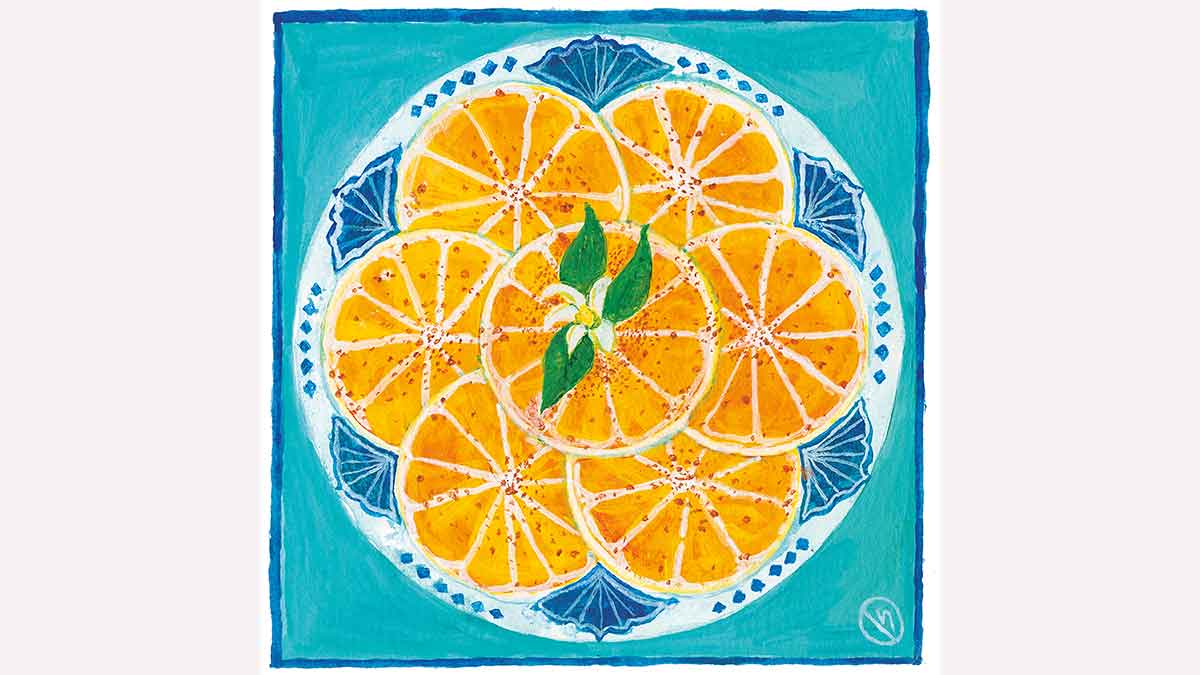Aramco World
Cinnamon rolling through the centuries
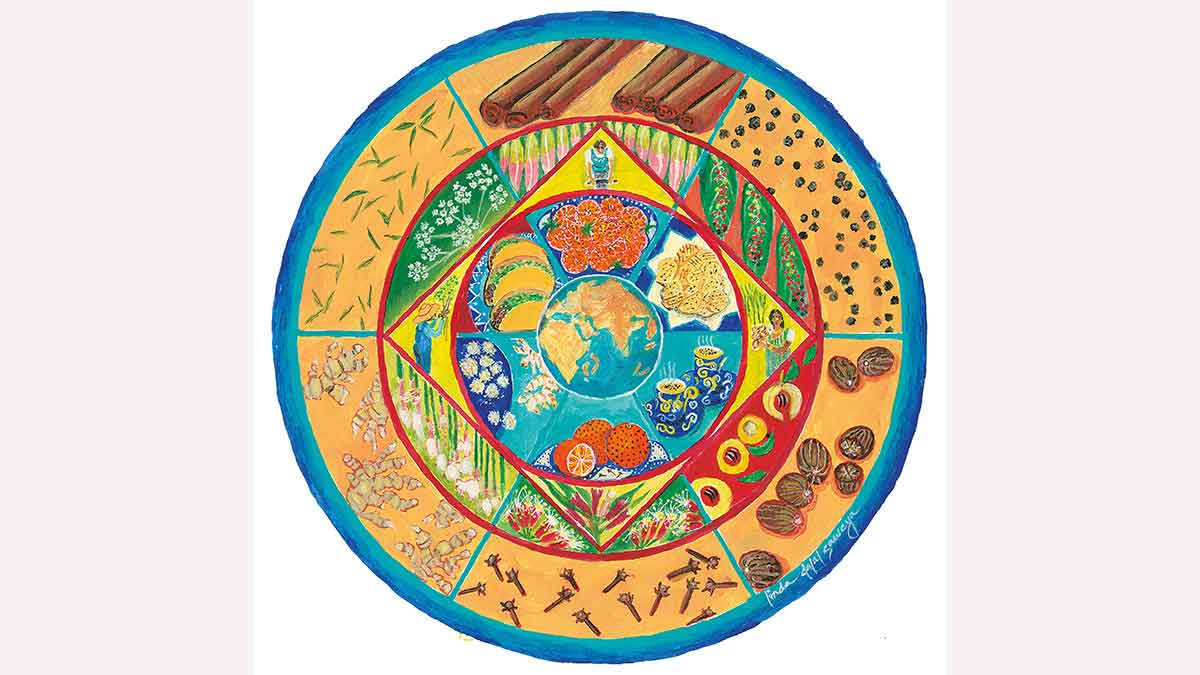
Global April 27, 2021 - By
Through history, the spice has played an integral part in a global story.
“The prince named Vijaya, the valiant, landed in Lanka,” recounts the Mahavamsa, the epic-poem history of Sri Lanka composed in the fifth century CE. Vijaya was, the account goes, expelled some 2,600 years ago from the Sinhalese royal court in India, and he sailed south from the Ganges Delta with some 700 soldiers. When he and the troops landed on the northwest coast of the island country, they “sat down wearied,” and their hands “were reddened by touching the dust.”
Vijaya called the kingdom he founded Thambapanni, “Copper hands.” According to Sri Lankan historian Dilhani Dissanayake of La Trobe University in Australia, panni can refer also to leaves — specifically young leaves of the Cinnamomum verum (“true cinnamon”) tree native to that part of Sri Lanka.
An unassuming evergreen that, when cultivated, is a bush as much as it is a tree, says Marryam H. Reshii, author of The Flavour of Spice (Hachette India, 2017). Cinnamon’s value lies not in its leaves, but in its inner layer of bark, Reshii says.
Together with its close but coarser relative cassia (Cinnamomum cassia and several other species), which originated in southern China, cinnamon was carried to Egypt as early as 2000 BCE by merchants who, while trading throughout the Middle East and Arabia, kept their Sri Lankan source a secret. It isn’t surprising, therefore, that Greek historian Herodotus wrote around 430 BCE in The Histories that cinnamon grew in the land where Dionysus, the Greek god of harvest, was brought up — that is, somewhere to the east — and that it was gathered in Arabia.
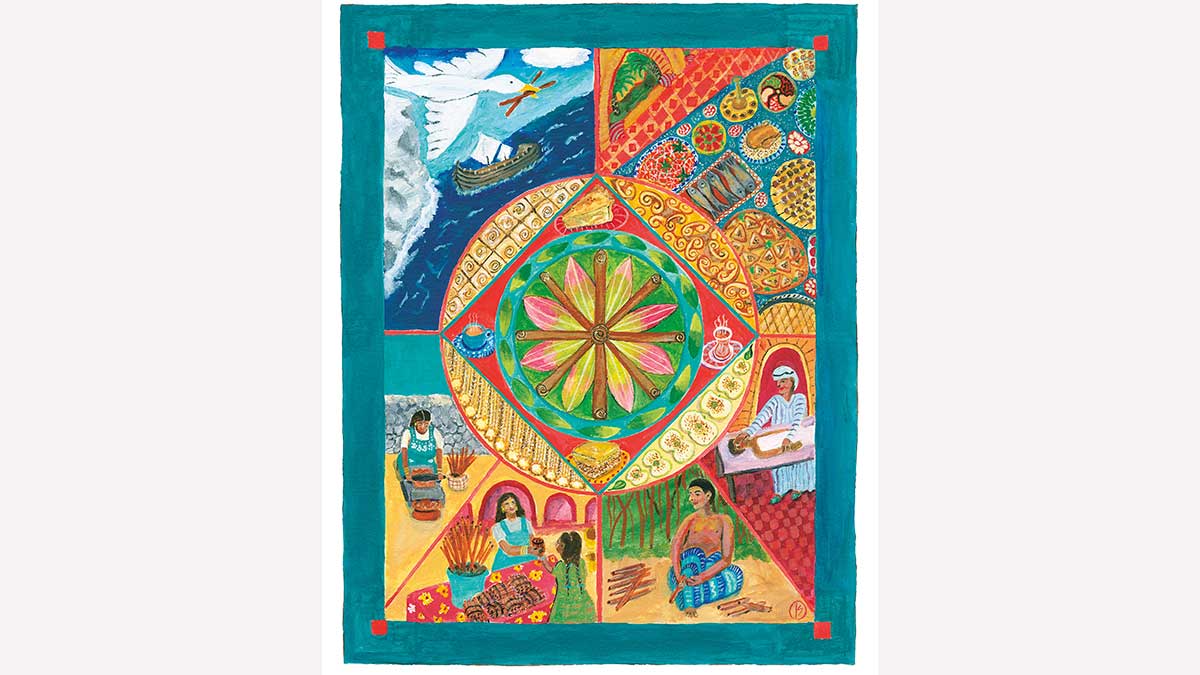
A fabulous story
Arab traders, he wrote, say that great birds carry these dry sticks, which we have learned from the Phoenicians to call cinnamon, and that the birds carry the sticks to their nests, which are plastered with mud and are placed on sheer crags where no man can climb up. The merchants, he continued, set large chunks of raw meat near the nests of this cinnamologus, or cinnamon bird. “The birds swoop down and carry off the limbs of the beasts to their nests, and the nests, being unable to bear the weight, break and fall down, and the Arabians approach and collect what they want.”
A “fabulous story,” scoffed Roman naturalist and philosopher Pliny the Elder nearly 500 years later, told by traders to keep prices high and sources shrouded. And while Pliny was right — the world did value cinnamon for both rarity and mystery — scarcely anyone in the Mediterranean or Europe could answer where it came for nearly another 1,000 years.
While today cinnamon is on nearly every spice rack, and it is used mostly to flavor food and drinks, its history shows it has had a range of other, mostly health-related roles, as Jack Turner noted in his 2005 Spice: The History of a Temptation. In addition to Egyptians who used it as a perfume in embalming, the Bible’s Old Testament mentions it as an ingredient in anointing oil. From India to Rome people burned it in cremation. The voluminous 10th century Kitab al-Hawi fi al-tibb (Comprehensive Book on Medicine) by polymath Muhammad ibn Zakariya al-Razi recommends cinnamon to help “prevent sweat from armpit and feet, so there will be no stink.”
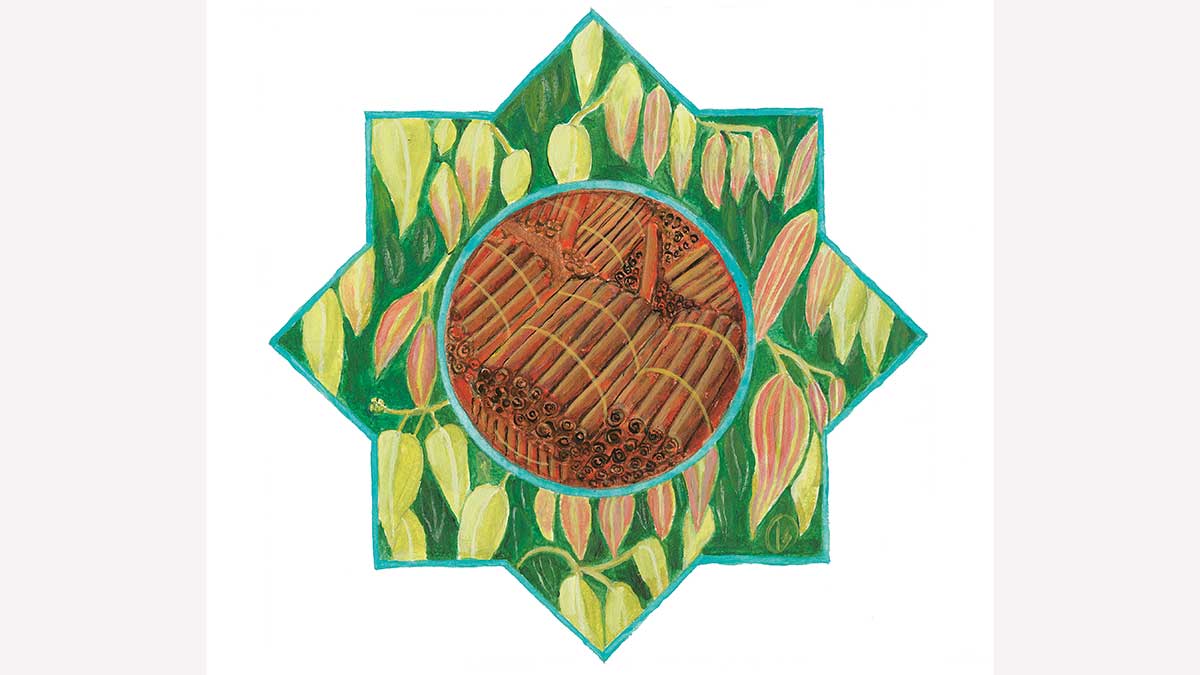
Cinnamon sticks
Medieval Islamic physicians used cinnamon to treat wounds, tumors, and ulcers. They influenced European physicians such as Italian Matthaeus Platearius, whose 12th century The Book of Simple Medicines recommended cinnamon to help form scars on wounds and relieve ailments of the stomach, liver, heart, and more. Dissanayake points out that in Sri Lanka, the fourth century CE medical books of King Buddhadasa introduced the cinnamon tree as a medicinal tree or herb, and that, still today, Ayurvedic medicine prescribes cinnamon to aid digestion and oral hygiene.
It was not until the 10th century that glimmers of the connections between Sri Lanka and cinnamon began to appear. In Aja’ib al-Hind (Marvels of India), traveler al-Ramhormuzi wrote, “Among remarkable islands, in all the sea there is none like the Island of Serendib, also called Sehilan [Ceylon]. … Its trees yield excellent cinnamon bark, the famous Singalese cinnamon.” Ibn Battuta, the most well-known global traveler of his time, came to the island in 1344 CE and wrote — or perhaps exaggerated — that “the entire coast of the country is covered with cinnamon sticks washed down by torrents and deposited on the coast looking like hills.”
Hieronimo di Santo Stefano of Genoa, traveling in the late 15th century, noted that “after a navigation of 26 days we arrived at a large island called Ceylon, which grow the Cinnamon trees.” Still, the origins of cinnamon did not become widely known until after 1505, the year a storm blew a Portuguese fleet to the shore of Sri Lanka. The Portuguese departed with nearly six metric tons of the spice that whetted their appetite for more. Over the next 100 years, variously through force and local alliances, they gradually took control of the centuries-long Arab and Muslim trade monopoly.
A century later Ceylon’s king allied with the Dutch to evict the Portuguese, only to have the British wrest control near the end of the 18th century. However, by 1800, Cinnamomum verum transplants were thriving commercially in India, Java (now in Indonesia), and the Seychelles off East Africa. No longer as scarce, cinnamon’s value declined, on its way to becoming a worldwide grocery store spice staple.
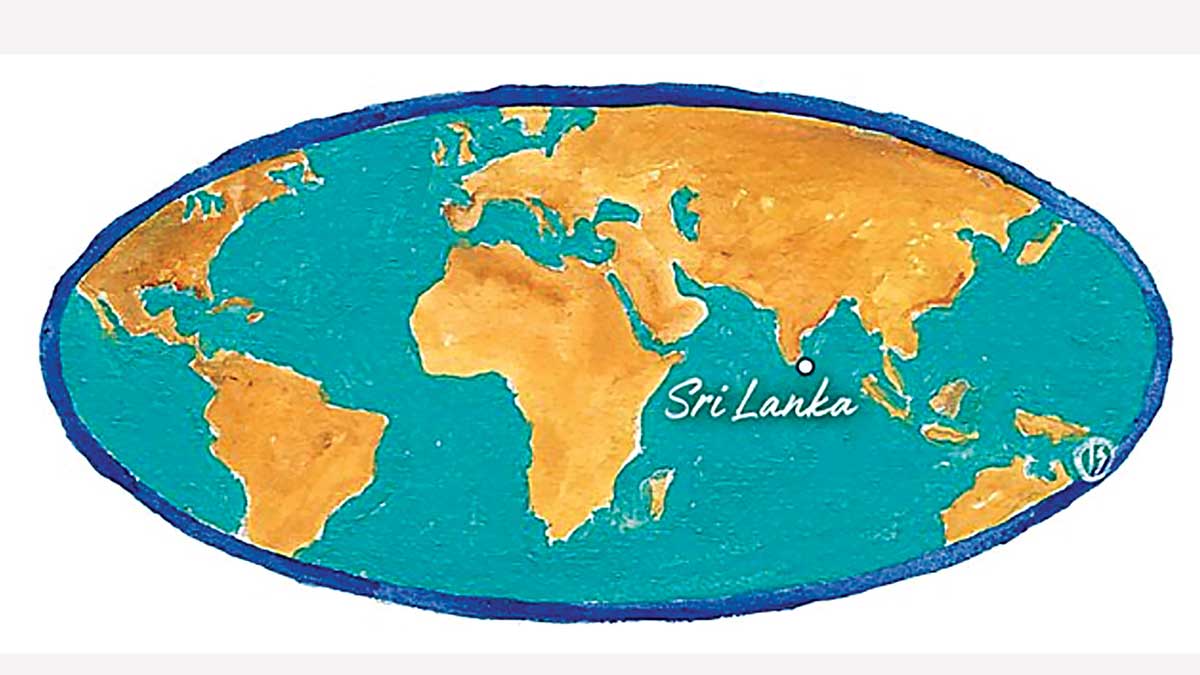
Quills and powder
Now twice a year, after Sri Lanka’s big and then small monsoon seasons, when high humidity makes production easier, wrist-sized cinnamon trees are cut, and skilled cinnamon peelers trim the branches and scrape off the outer bark. With sharp knives they loosen and then remove the delicate inner bark, often only about a half-millimeter thick. They pack the paper-thin curls inside one another to form dense, cigar-like quills that are dried, graded, and cut into lengths.
Both in quills (cinnamon sticks) or ground to powder, true cinnamon has a highly fragrant aroma with a warm, woodsy flavor that is simultaneously delicate and intense, and its aftertaste is sweet. While in European and American cultures cinnamon features frequently in cakes, cookies, candies, and hot drinks, in Sri Lanka, where cinnamon is pervasive in the national cuisine, cooks often add a quill to fish curries, for instance, and elsewhere, cinnamon frequently compliments savory flavors such as Moroccan lamb tagines (slow-cooked stews), Turkish pilafs, and Middle Eastern meat dishes, as well as curry powders, masala spice mixes, and the essential Chinese five spice mix.
Often what is on the shelf today is not Cinnamomum verum, true cinnamon, but its cousin cassia, which now grows both in southern China and in other parts of South Asia, like Laos and Vietnam. Easier and cheaper to produce, cassia’s inner bark is darker, coarser and thicker — often too hard and thick to pulverize or grind by hand using a mortar and pestle. Cinnamon has long been a key part of Sri Lanka’s cultural identity, and today it is one of the world’s most popular spices, a key to every cook’s pantry.
